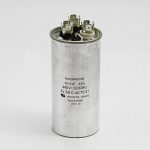Capacitors are fundamental components in electronic circuits, widely used for energy storage and voltage regulation. While it is commonly known that capacitors store electrical charge, there is often confusion regarding whether capacitors can generate voltage on their own. In this article, we will delve into the intricate workings of capacitors and explore the phenomenon of voltage generation within them.
- Capacitor Basics:
To understand voltage generation in capacitors, let's first establish a foundation of their basic principles. A capacitor consists of two conductive plates separated by an insulating material, known as a dielectric. When a voltage is applied across the plates, an electric field is established within the dielectric, causing the accumulation of charge on each plate. This stored charge is what allows capacitors to store electrical energy. - Charging and Discharging:
When a capacitor is connected to a power source, such as a battery, it undergoes a process called charging. During charging, electrons flow from the negative terminal of the power source to one plate of the capacitor, while an equal number of electrons are repelled from the other plate, creating a potential difference between the plates. This potential difference, commonly known as voltage, is generated as a result of the charge accumulation. - Voltage Generation:
While capacitors do not generate voltage in the same way as a power source, they can indirectly produce a voltage across their terminals. This phenomenon is due to the energy stored within the capacitor. When the power source is disconnected, the capacitor retains the stored charge, and the voltage across its terminals remains constant. This stored energy can be released when the capacitor is connected to a circuit, resulting in the generation of voltage. - Capacitor Types and Voltage Generation:
Different types of capacitors exhibit varying characteristics when it comes to voltage generation. Electrolytic capacitors, for example, are polarized and can generate a voltage when connected in reverse bias. This phenomenon, known as reverse voltage, occurs due to the chemical reactions within the electrolyte. On the other hand, non-polarized capacitors, such as ceramic or film capacitors, do not generate voltage in the same manner. - Practical Applications:
Understanding the voltage generation in capacitors is crucial for various applications. Capacitors are commonly used in power supply circuits to smooth out voltage fluctuations, ensuring a stable and regulated output. Additionally, capacitors play a vital role in timing circuits, signal coupling, and frequency filtering, where their ability to store and release energy is essential.
Conclusion:
In conclusion, while capacitors do not generate voltage in the same way as a power source, they can indirectly produce voltage through the release of stored energy. The phenomenon of voltage generation in capacitors is a fundamental aspect of their functionality and is utilized in numerous electronic applications. By comprehending the science behind this phenomenon, engineers and enthusiasts can harness the full potential of capacitors in their designs and circuits.


Average Rating